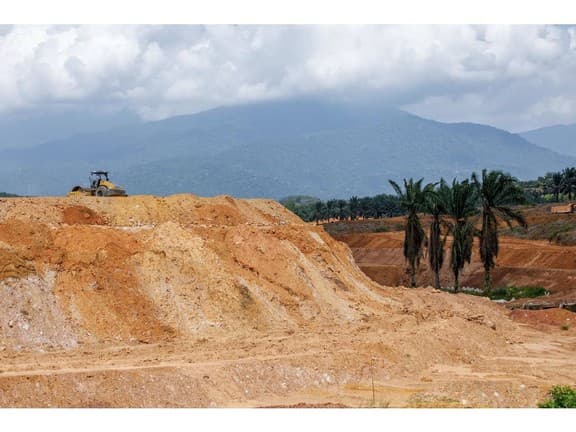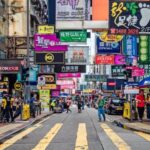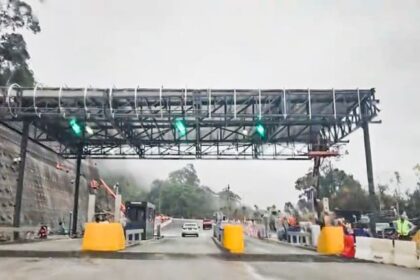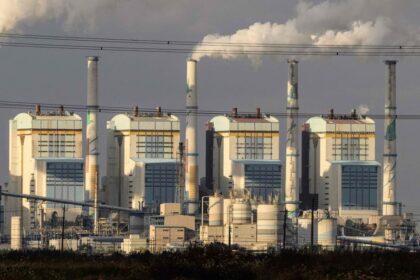AI demand is reshaping Malaysia’s plantations into power and data parks
Malaysia’s biggest palm oil groups are reinventing large parts of their estates as sites for artificial intelligence data centers and utility scale solar projects. The shift targets a surging wave of digital investment and the heavy power needs of modern server farms. By 2035, data centers in Malaysia could require at least five gigawatts of electricity, close to 20 percent of the country’s current generating capacity. Malaysia now accounts for an estimated 40 percent of Southeast Asia’s planned data center capacity, with roughly 34 billion US dollars in commitments from global technology companies. The government has set a target of 81 operating data centers by 2035.
- AI demand is reshaping Malaysia’s plantations into power and data parks
- Why Malaysia is attracting the world’s AI server farms
- Palm oil majors move from trees to racks and panels
- Where the power will come from
- Johor’s advantage and bottlenecks
- Heat, water and design choices in the tropics
- Green claims versus green outcomes
- Key Points
Plantation groups control vast, contiguous tracts of land that can host campus scale server farms. They also have room to install large solar arrays, batteries and new substations, creating bundled offerings for cloud and AI operators that need space, power and speed to market. Companies including SD Guthrie, Kuala Lumpur Kepong and IOI Corporation are building industrial parks on plantation land and pitching themselves as landlords and green power suppliers in one package.
The strategy is not without friction. Power and water connections at some sites lag demand, and clean energy supply is tight. Several developers report delays to utility hookups, with some expansions pushed into 2026. Malaysia’s tropical heat raises cooling loads, which means higher operating costs and careful design choices for low energy computing. Environmental groups welcome more solar but question whether these projects change core issues tied to palm oil, such as deforestation, peatland damage and labor rights.
Why Malaysia is attracting the world’s AI server farms
Regional dynamics are central to the boom. A moratorium on new data centers in Singapore, now partially relaxed, pushed operators to look north. The state of Johor sits on Singapore’s doorstep, with short fiber routes delivering low latency connections to the island’s cloud zones. New cross border infrastructure, including additional dark fiber and the Johor–Singapore Special Economic Zone, is deepening industrial ties and making Johor a natural overflow market for Singapore’s constrained capacity.
Malaysia layers that proximity with ample land and pro investment policies. Hyperscalers and cloud platforms have announced large projects in the country, and state agencies are promoting streamlined approvals for digital infrastructure. Global names like Google, Microsoft and Amazon have pledged multibillion dollar programs. Johor has attracted tens of billions of ringgit in recent years, with announcements that involve technology leaders and specialist developers. The direction of travel is clear. Malaysia is positioning itself as a regional base for AI compute, with estates in Johor, Perak, Negeri Sembilan and Kedah lined up for industrial parks and renewable energy buildouts.
Palm oil majors move from trees to racks and panels
SD Guthrie, the world’s largest oil palm planter by acreage, is the most visible example of the pivot. The group owns about 340,000 hectares in Malaysia and plans to allocate roughly 10,000 hectares over the next decade for industrial parks and solar projects. Management has set a target of one gigawatt of solar capacity in operation within three years. The company also signed an agreement with infrastructure partner Gamuda to develop, own and operate solar assets with a combined target of 1.2 gigawatts. In Johor, SD Guthrie is planning a green powered park in Kulai, including a 259 hectare site inside the Johor–Singapore Special Economic Zone. New ventures in industrial parks and renewable energy are expected to contribute about 30 percent of group earnings by 2030.
Mohamad Helmy Othman Basha, SD Guthrie’s group managing director, has argued that the company’s land bank gives it a strategic role in the country’s data center buildout. He underscored the importance of location when discussing the incoming wave of projects.
Data centres require land and it has to be strategic, and this is where we can play a role because now, we are in the business of providing the land for industrial parks.
Kuala Lumpur Kepong has launched a 1,500 acre technology park and is planning an additional park in Johor. IOI Corporation is following a similar model, dedicating plantation land to digital parks and co located solar. Analysts point out that large scale solar can deliver margins that exceed returns from palm oil cultivation, particularly when paired with long term offtake contracts from hyperscale tenants. That math is drawing plantation groups into power generation, land development and data center real estate, creating a new profit stream less tied to commodity prices.
There are hazards. Misjudged sites can lock operators into costly cooling, flood mitigation or transmission upgrades. Land that looks attractive on a map can be far from strong grid nodes, which slows build schedules and increases capital costs. Firms that master site selection, utility planning and long term power contracting will likely capture the most value.
Where the power will come from
Malaysia’s forecasted five gigawatts of data center demand will require both generation and grid investment. The national utility, Tenaga Nasional Berhad, has outlined plans to strengthen transmission lines and substations after recent outages exposed vulnerabilities in the peninsular grid. Developers say more dispatchable generation and faster interconnection timelines are also essential, since AI heavy facilities draw high, constant loads and require redundancy to meet service level commitments.
Plantation companies are advancing several energy strategies in parallel. Ground mounted solar on remote estate land can scale quickly. Corporate power purchase agreements under Malaysia’s newer programs allow data center operators to contract solar output directly. A growing focus on energy storage aims to smooth solar variability, with battery projects sited across estates to support local grids. Some developers are studying wheeling arrangements that move renewable power across the network to match it with demand at their parks.
Global trends reinforce the pivot. The International Energy Agency has flagged a surge in data center spending and the related stress on electricity systems. Developers are responding with more on site generation, microgrids and innovative storage. Several projects are testing microgrids that reuse electric vehicle batteries, while many data center operators are turning to solar because permitting is typically faster than for other power sources. Pairing solar with high efficiency hardware and intelligent power management can shave both costs and emissions.
Johor’s advantage and bottlenecks
Johor has become the focus of Malaysia’s data center expansion. Vacancy is tight and demand is strong, but growth has outpaced utility upgrades at some sites. Sedenak Tech Park, one of the state’s flagship campuses, has faced delays delivering water and power for expansion phases, with certain connections pushed into 2026. The takeaway for operators is clear. Land availability is not enough. Projects that lock in transmission capacity, water supply and substation access early will move faster.
Connectivity adds another layer of strength. New dark fiber routes and cross border links to Singapore allow low latency routing to the island’s internet exchanges and cloud zones. Johor’s emerging Digital Superhighway Network, a backbone spanning more than 1,000 kilometers, is designed to tie together industrial clusters within the state and improve resilience. The Special Economic Zone across the Johor–Singapore boundary aims to smooth logistics and workforce movement, which supports long run operations for data intensive businesses.
Capital is following this setup. State officials say Johor has attracted more than RM164 billion in data center related investment over roughly four years, including programs from Microsoft, Nvidia and specialist operators. The combination of location, fiber and scale has put Johor on shortlists for hyperscale capacity serving both Malaysia and Singapore.
Heat, water and design choices in the tropics
AI data centers draw large amounts of energy for both computing and cooling. A common metric, power usage effectiveness, compares total facility power to the power used by IT equipment. In hot, humid climates, cooling systems work harder, pushing that ratio up. Malaysia’s operators are responding with a mix of design choices that keep efficiency in check without sacrificing reliability.
Options include high efficiency chillers, hot aisle containment, liquid cooling for dense racks and direct to chip solutions that remove heat at the source. Water use requires careful planning. Evaporative systems can improve efficiency but raise consumption, so many designs favor closed loop cooling or hybrid systems that reduce water draw while maintaining performance. Humidity control, filtration and careful airflow design matter as much as raw chiller capacity.
Site selection is equally important. Developers are mapping flood plains, drainage and sea level exposure, then elevating critical equipment and hardening electrical rooms. Orienting buildings to reduce solar gain, adding reflective roofs and using solar canopies for shading can lower cooling loads. Reliable access to water for nonpotable uses, combined with on site storage, reduces vulnerability during dry spells. Getting these basics right lowers lifetime costs and helps operators meet sustainability targets.
Green claims versus green outcomes
Environmental groups view solar expansion as a positive step for Malaysia’s power mix, yet they warn that clean energy projects on plantations do not erase the legacy of deforestation or peatland degradation. Many of the parcels being repurposed are mature estates that were cleared decades ago. Turning parts of them into solar farms and data parks can reduce pressure to open new land, but restoration and protection of high conservation value areas remain essential if companies want to show a real environmental gain.
Labor standards are another concern. Campaigners point to wages, safety, housing and recruitment practices for plantation workers. Building digital parks should not distract from improving conditions and reporting across existing agricultural operations. Third party audits, better traceability and transparent grievance processes are central to sustained progress.
Certification programs such as the Malaysian Sustainable Palm Oil and the Roundtable on Sustainable Palm Oil set frameworks many producers use. Critics say enforcement can be uneven. Plantation owners that are entering the power and data economy have an opportunity to raise the bar by publishing granular land use maps, peatland management plans and verified no deforestation commitments alongside their new energy and industrial ventures.
Investors will continue to scrutinize emissions accounting. Solar output paired with batteries can displace fossil generation during the day, which lowers a data center’s carbon profile. The biggest climate gains will come when projects align guaranteed green power supply with the data center load throughout the day and night, through storage, smart demand management and clean firm capacity where available.
Key Points
- Malaysia targets 81 operational data centers by 2035 and holds about 40 percent of Southeast Asia’s planned capacity.
- Data centers in the country could need at least five gigawatts of electricity by 2035, near 20 percent of current national capacity.
- Palm oil majors are repurposing estates for industrial parks with data centers and large solar farms.
- SD Guthrie plans one gigawatt of solar within three years and is allocating about 10,000 hectares for parks and power projects.
- Johor has emerged as a hub due to proximity to Singapore, new dark fiber links and the Johor–Singapore Special Economic Zone.
- Utility connections remain a bottleneck, with some projects facing delayed water and power hookups into 2026.
- Cooling in Malaysia’s tropical climate is a key cost driver, pushing adoption of liquid cooling and efficient plant design.
- Environmental groups welcome more solar but call for stronger action on deforestation, peatland protection and labor rights.
- Grid upgrades by Tenaga Nasional Berhad and corporate power contracts will shape how fast clean energy can support the boom.
- Analysts say large scale solar can be more profitable than palm oil, adding a new revenue line that is less exposed to commodity swings.












